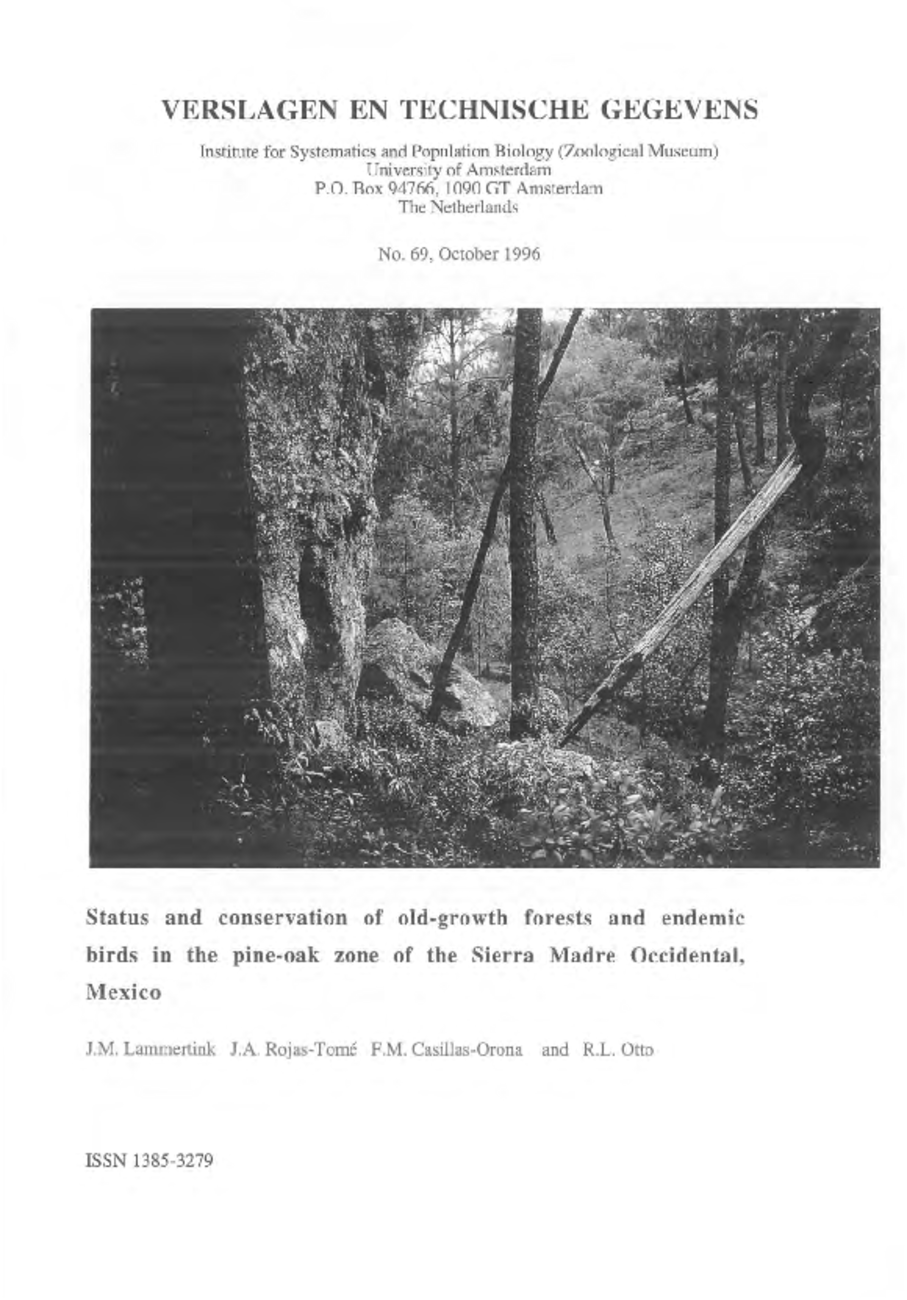Status and conservation of old-growth forests and endemic birds in the pine-oak zone of the Sierra Madre Occidental, Mexico
The pine-oak forests of the Sierra Madre Occidental, a mountain range in NW Mexico, have recently been recognized as an area of high endemism and biodiversity. Selective logging threatens three bird species endemic to this habitat, who depend on standing dead trees (snags). This report is based on an 11 month field survey that aimed to locate old- growth remnants and to assess the status of the endemic birds. Old-growth is defined here as a forest that has never been logged mechanically.
Old-growth forests were located by ground-truthing of areas predicted by various methods: analyses of topographical maps and satellite images, aerial surveys, interviews with forestry technicians and local inhabitants, and literature studies. None of the prediction methods gives unambiguous results on their own. Only by applying the whole set of techniques could a comprehensive inventory be obtained of old-growth sites.
Of the original 93, 560 km2 of pine-oak habitat in the Sierra Madre Occidental, 571 km2 remained as old-growth in 1995. This is a reduction of 99.4 %. The forests on high mesas, where the largest and most accessible timber stood, have been reduced to 22 km2 uncut forest. In logged forests pines greater than 30 em girth have been extracted and snags have been cut for the production of paper pulp. Small settlements are everywhere.
Information on the Imperial Woodpecker (Campephilus imperialis) was obtained through interviews with 62 elder inhabitants who had known the bird. The extinction peak of this species was between 1946 and 1965, when 60 % of the informants saw their last Imperial Woodpecker. Hunting by settlers and loggers, for fun and for medicinal purposes, quickly decimated populations. Recovery from the shooting became impossible through the ensuing logging of nearly all the pine-oak habitat. Mature pines and pine snags were removed, depriving the Imperial Woodpecker of foraging and nesting sites. Imperial Woodpeckers were often seen in groups. A typical group consisted of seven or eight birds. With an estimated average density of one Imperial Woodpecker per 13 km2, the original pine-oak habitat in the whole range of the species may have carried only 8,000 individuals or 1060 groups. Interviews, and workings found in one old-growth area, indicate that very few Imperial Woodpeckers may have survived into the 1990s. Extinction of the species seems nevertheless inevitable since nowhere does any breeding habitat remain.
Cutting of snags is the main threat to the Thick-billed Parrot (Rhynchopsitta pachyrhyncha). This species only breeds at altitudes above 2300 m, but snags are scarce on the exploited mesa forests in the highest parts of the sierra. The breeding range runs from within 85 km of the US border in northern Chihuahua south to central western Durango, with an apparent gap in southern Chihuahua. Pine seeds for foraging are widely available in young recovering forest. Compared with historical records, encountered groups of wintering Thick-billed Parrots were small, few groups were seen, and the numbers of bathing and drinking parrots at a waterfall in northern Chihuahua were low. This indicates numbers have sharply declined in the course of the 20th century.
The status of the Eared Trogon (Euptilotis neoxenus) is far less critical. Eared Trogons were observed at 55 locations, mainly in canyons. Nests were found in riparian corridors in canyons. Such corridors are hardly accessible to the logging industry. The ability, and probable preference, of the Eared Trogon to breed in canyons likely explains why it is still fairly common. The erroneous notion that the Eared Trogon is a local and rare species must stem from the paucity of field studies in the Sierra Madre Occidental, as well as the wariness of the bird. It is mostly to be detected by its vocalizations.
Efforts are being made to ensure the total protection of three priority areas. These areas encompass the main old-growth fragments in the Sierra Madre Occidental. They are also of major importance to the endemic fauna. Protection of snags is required for three breeding areas of the Thick-billed Parrot. Ideally, exploitation of snags should be banned throughout the Sierra Madre Occidental.

